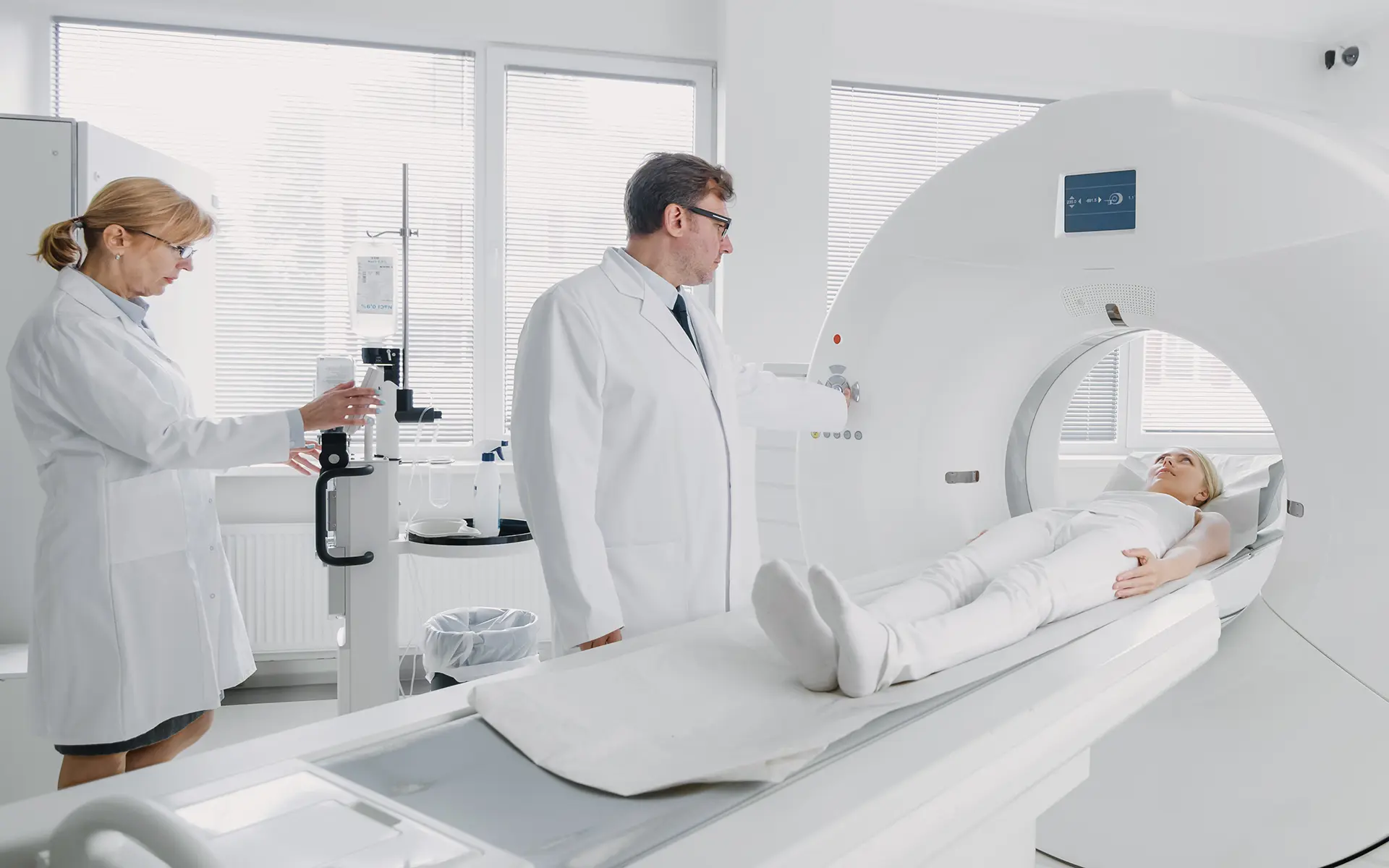Surgery for Mesothelioma
Surgery is one of the standard forms of treatment for mesothelioma. In addition to serving as a curative or palliative treatment option, surgical procedures can also be used to diagnose mesothelioma.

How’s Surgery Used to Diagnose and Treat Mesothelioma?
Surgery is a common treatment option for patients with mesothelioma, and it’s often combined with chemotherapy, radiation, and other treatments to improve patients’ quality of life and increase survival rates.
There are multiple factors to consider when determining whether a patient is a candidate for curative surgery. This includes the location and cell type of their tumors and the stage of the disease. In early stages, surgery may be available to resect (or remove) the tumor or tumors.
In patients with later-stage illness, palliative surgical procedures may be used to provide relief from symptoms such as fluid buildup or tumors that are pressing against organs and causing pain.
Surgery also plays a role in diagnosing mesothelioma, since a tissue biopsy is the only definite way to diagnose this form of cancer.
Surgery for Pleural Mesothelioma
Pleural mesothelioma affects the thin tissue that lines the lungs (the pleura) and chest cavity. Pleural is the most common form of the disease. Standard procedures used to treat early-stage malignant pleural mesothelioma include extrapleural pneumonectomy (or EPP) and pleurectomy with decortication (or P/D). Extrapleural pneumonectomy involves the complete removal of the affected lung, whereas pleurectomy with decortication only involves the removal of the lining of the affected lung.
Surgical procedures can also be used as diagnostic tools and as palliative treatments for symptom relief in advanced cases.
Extrapleural Pneumonectomy
During an extrapleural pneumonectomy, a surgeon removes the entire affected lung. They may also remove all or part of the diaphragm on the affected side of the body, a section of the pericardium (the lining of the heart sac), and nearby lymph nodes. If these parts are removed, the surgeon will replace the diaphragm and heart sac with man-made replicas.
Due to the invasive nature of EPP, not everyone is a candidate for this type of operation. The surgery is usually only available to pleural mesothelioma patients with epithelioid mesothelioma that has not spread to the lymphatic system. Complications are fairly common even in patients who are excellent candidates. The American Cancer Society states that about one-third of patients who undergo extrapleural pneumonectomy experience major complications, including fluid buildup, blood clots, changes in heart rhythm, and reduced lung function.
Pleurectomy With Decortication
Patients with malignant pleural mesothelioma may also be candidates for a type of surgery called pleurectomy with decortication. During P/D, a surgeon removes the pleural lining of the affected lung. They may also remove the lining of the chest cavity and some or all of the diaphragm. Unlike extrapleural pneumonectomy, the lung is not removed.
In patients in an early stage of the disease, pleurectomy with decortication may eradicate tumors. However, the procedure can also provide palliative relief to patients with later-stage pleural mesothelioma, reducing symptoms such as fluid buildup and difficulty breathing.
Veterans who were diagnosed with mesothelioma may be eligible for VA compensation. To find out if you qualify, speak with a patient advocate today.

Diagnostic and Palliative Surgical Procedures
- Mediastinoscopy
- This camera-assisted diagnostic procedure shows whether tumors have spread to the patient’s lymph nodes.
- Pleurodesis
- During pleurodesis, a surgeon administers medicine into the lung cavity to close the space between the outer lining of the lung and the pleural cavity. This procedure helps prevent painful fluid buildup (pleural effusion) and facilitates proper lung function.
- Thoracentesis
- During thoracentesis, a surgeon uses a needle to drain fluid that has built up in the chest cavity. This can relieve breathing difficulties and chest pain.
- Thoracotomy
- During a thoracotomy, a surgeon operates to collect a sample of the tumor tissue to biopsy for diagnosis. They may also attempt to remove the tumor itself, if possible.
- Thoracoscopy
- During a thoracoscopy, a surgeon uses a tiny camera to view the chest cavity and a needle to collect samples to biopsy for diagnosis. This procedure can also be used as palliative therapy to drain fluid from the chest cavity.
Surgery for Peritoneal Mesothelioma
Peritoneal mesothelioma affects the thin tissue that lines the stomach (the peritoneum) and abdominal cavity. Peritoneal is the second most common form of the disease and generally has a better prognosis than pleural or pericardial mesothelioma because of the location of the tumors and the treatment options available. The most common treatment for peritoneal mesothelioma is surgery to remove the tumor(s), combined with heated intraoperative chemotherapy, or HIPEC. With HIPEC, heated chemotherapy drugs are administered directly into the abdomen during cytoreductive surgery to kill any remaining tumor cells.
Certain surgical procedures may also be used to diagnose peritoneal mesothelioma or offer palliative care to relieve pain and alleviate symptoms.
Cytoreductive Surgery + HIPEC
The most common surgery for peritoneal mesothelioma is called a peritonectomy. This procedure combines cytoreductive surgery and HIPEC — heated chemotherapy that is administered directly into the abdomen during surgery. During a peritonectomy, the surgeon may attempt to remove the cancer entirely and prevent the growth of new cancerous cells. In patients with more-advanced peritoneal mesothelioma, this treatment can provide patients with pain and symptom relief.
Diagnostic and Palliative Surgical Procedures for Peritoneal Mesothelioma
- Laparoscopy
- During this type of biopsy, a docter uses a tiny camera to view the abdomen and a needle to collect a sample of tissue for biopsy and diagnosis.
- Laparotomy
- During a laparotomy, a surgeon takes a sample of the tumor tissue to biopsy. They may also attempt to remove the tumor altogether, if possible.
- Paracentesis
- During paracentesis, a doctor uses a needle to remove fluid that has built up in the abdomen (ascites). This can relieve swelling and abdominal pain.
Surgery for Pericardial Mesothelioma
Pericardial mesothelioma affects the thin tissue that lines the heart (the pericardium). It’s the least common type of the disease and affects less than 1 percent of all patients. Because it’s so scarce, pericardial mesothelioma is generally not diagnosed until the patient has already passed away.
Pericardiectomy
Pericardial mesothelioma can cause a condition called constrictive pericarditis, which causes the lining of the heart to stiffen. This prevents the heart muscle from functioning properly. A surgeon may perform a pericardiectomy to treat this condition. During this surgical procedure, the lining of the heart is removed.
Diagnostic and Palliative Surgical Procedures for Pericardial Mesothelioma
- Pericardiocentesis
- During pericardiocentesis — also called a pericardial tap — a surgeon uses a needle and a catheter to remove fluid from around the heart. This can help alleviate shortness of breath and relieve pain.
Veterans with mesothelioma can take action without affecting their benefits.

Costs of Surgical Treatment
Treating the disease can quickly become financially draining. Surgery can be especially expensive. In addition to the operation itself, related surgery costs may include:
- Anesthesia
- Hospital room
- Travel
- Lodging
- Postoperative costs
- Prescriptions
- Follow-up visits
Fortunately, since most people with the illness were negligently exposed to asbestos (the primary cause of the disease), most patients are eligible to take legal action against the asbestos company or companies that exposed them to this carcinogen. The financial compensation from this legal action can cover most or all of the cost of treatment. If you have been diagnosed with the disease, speak with an experienced attorney today to learn about legal and financial assistance for treatment, including surgery.


